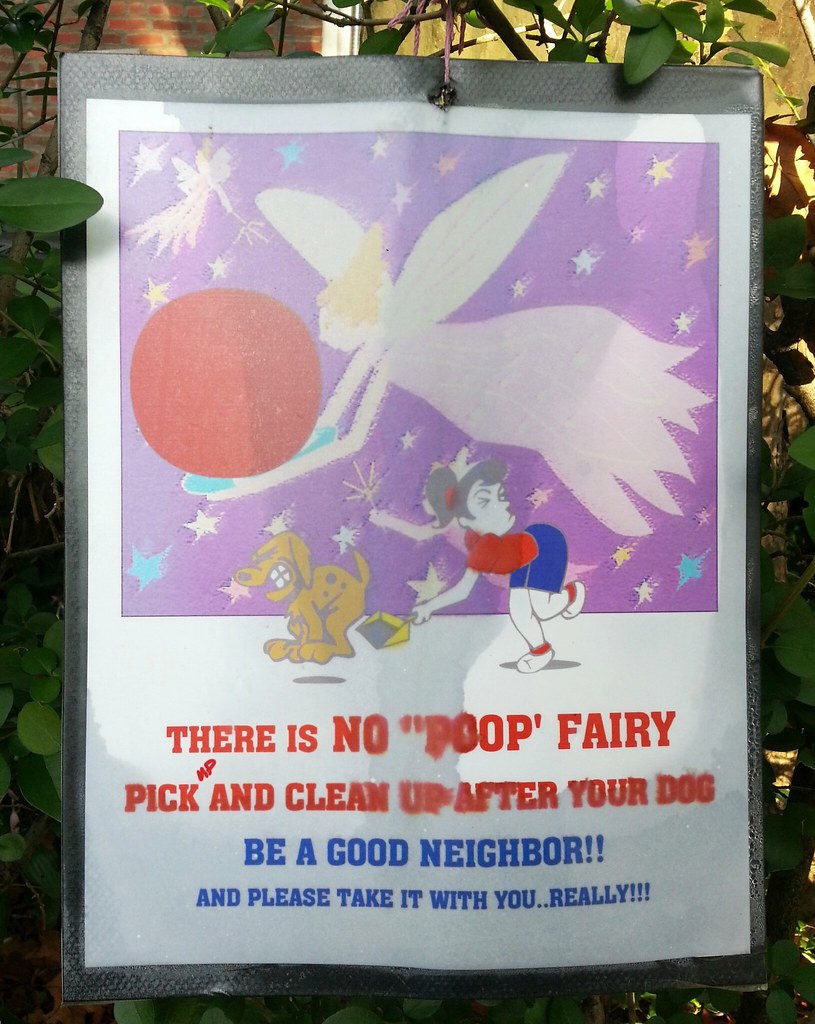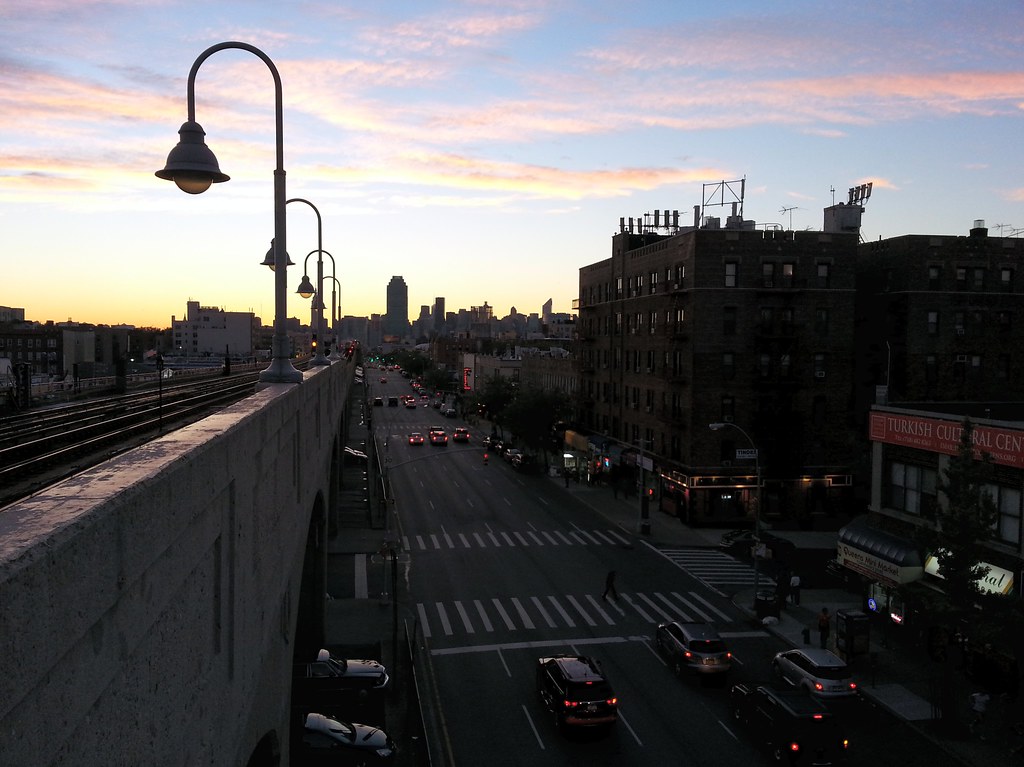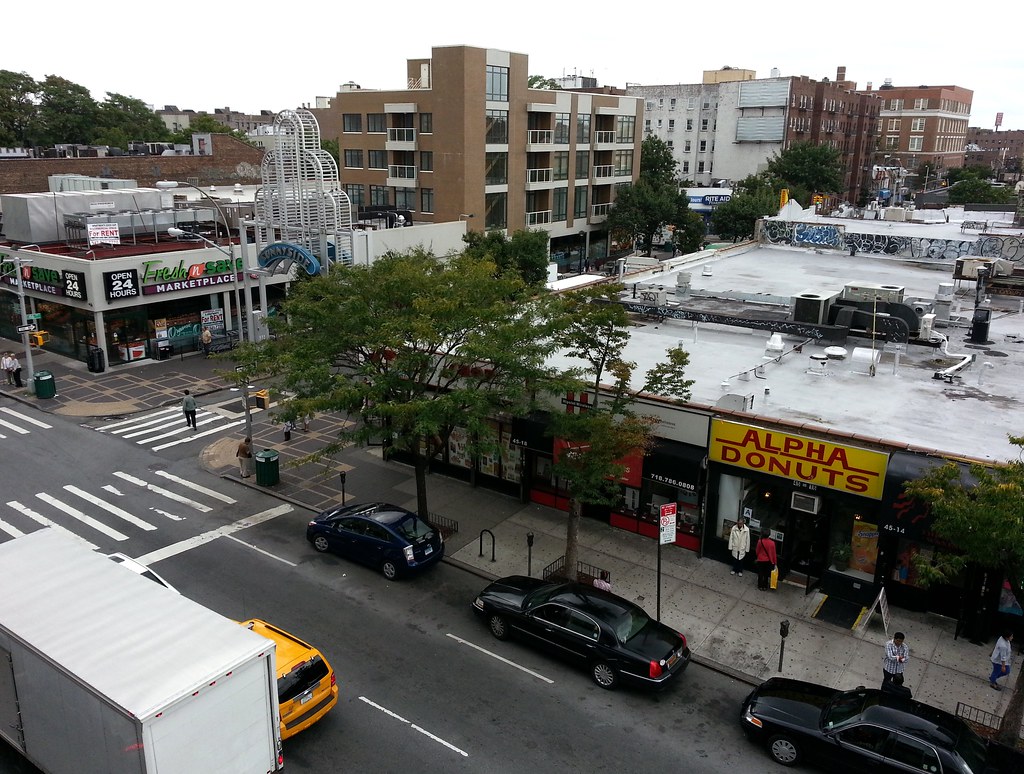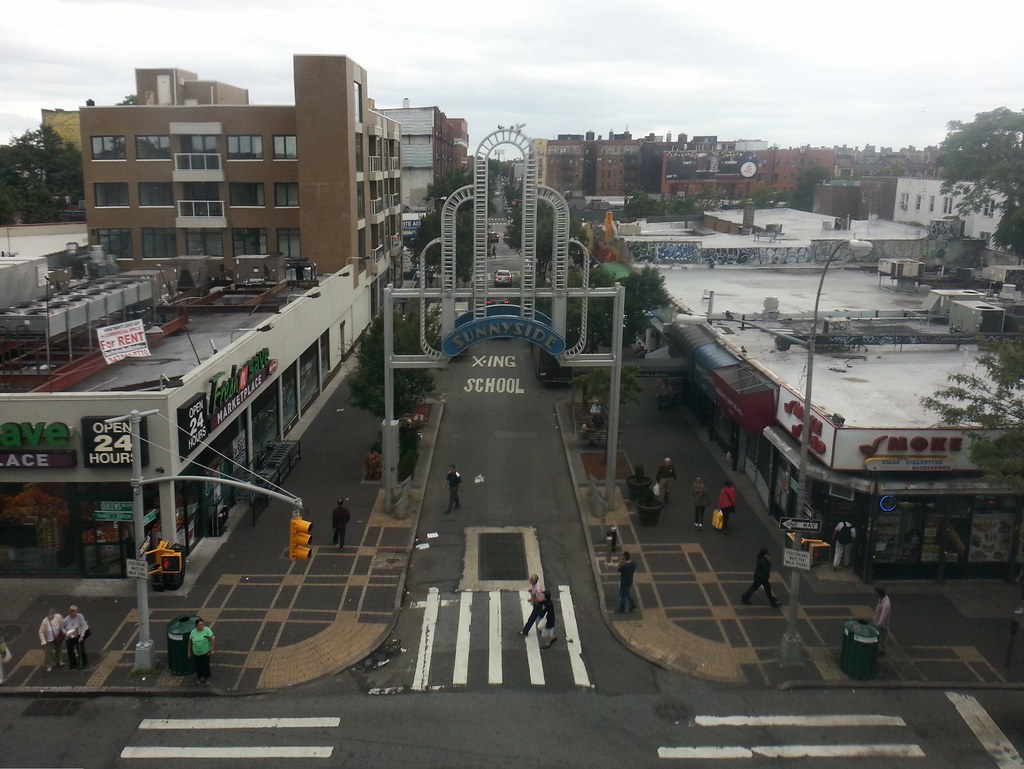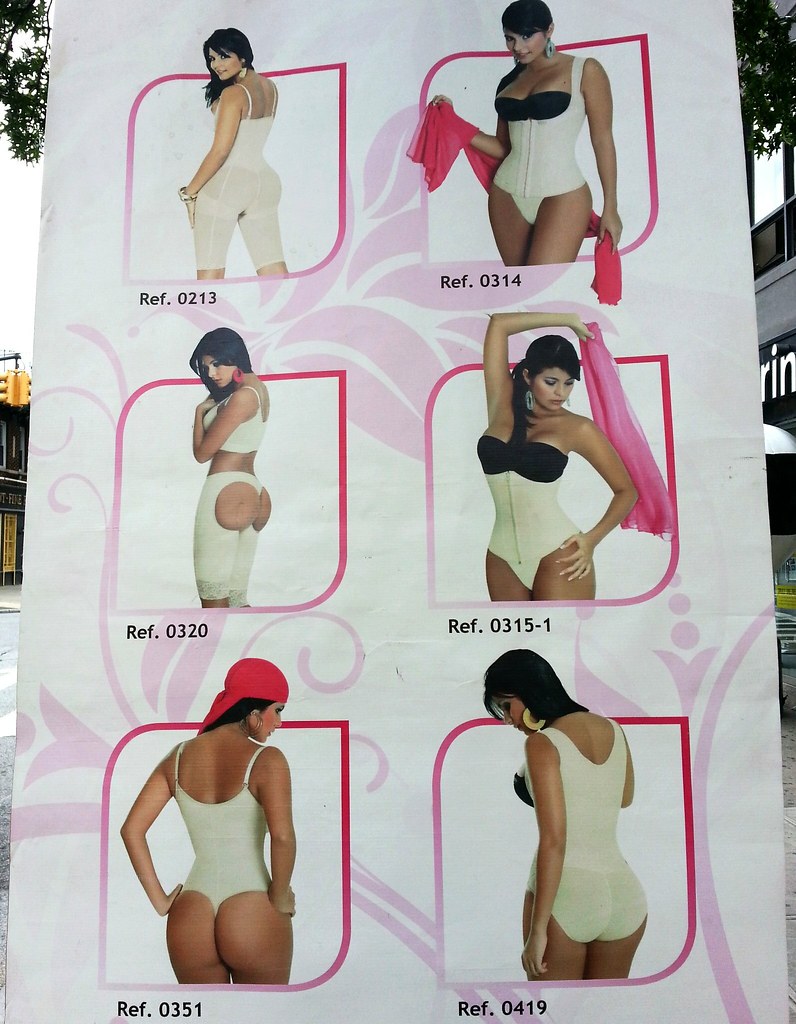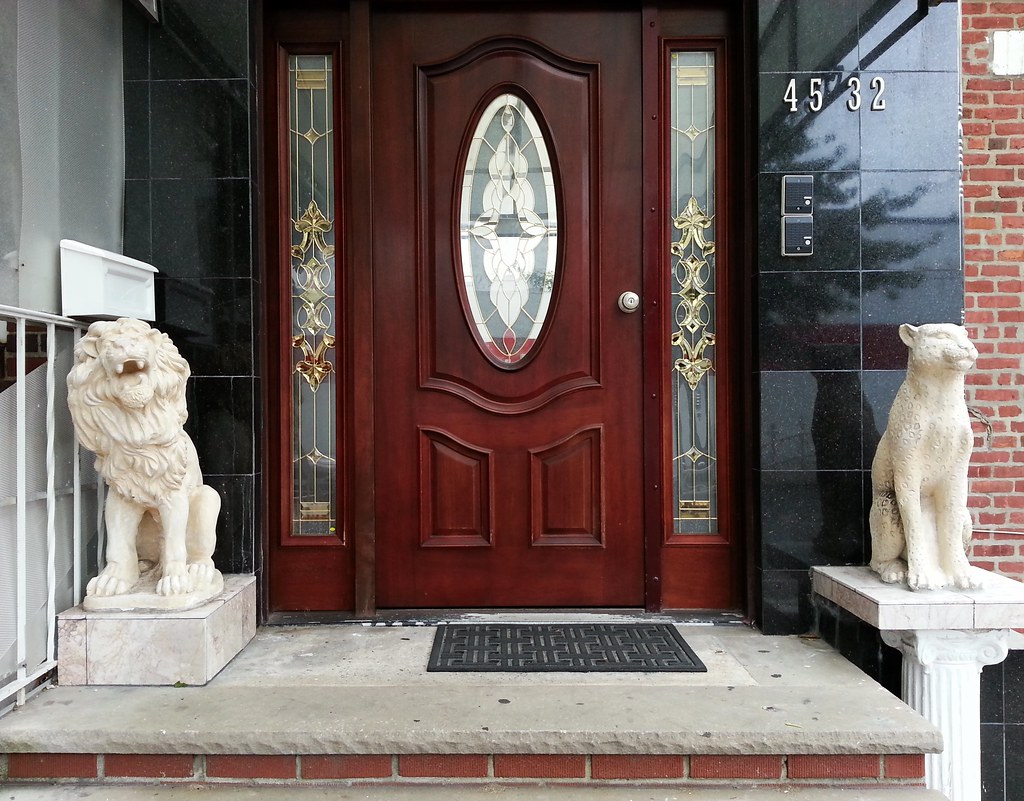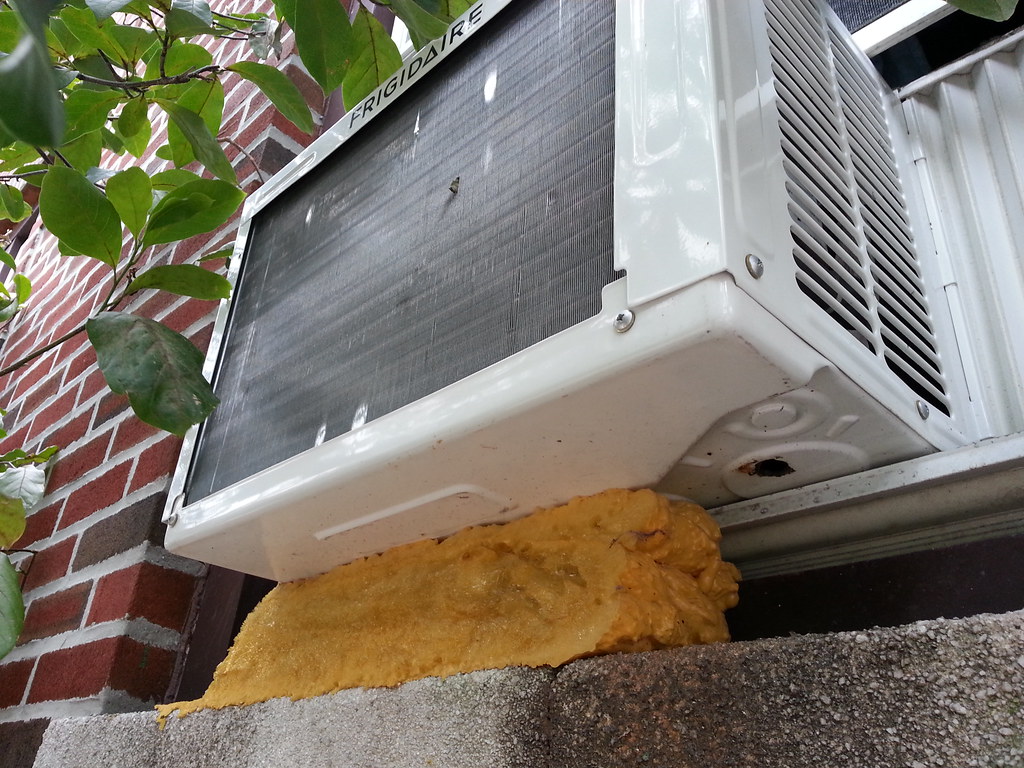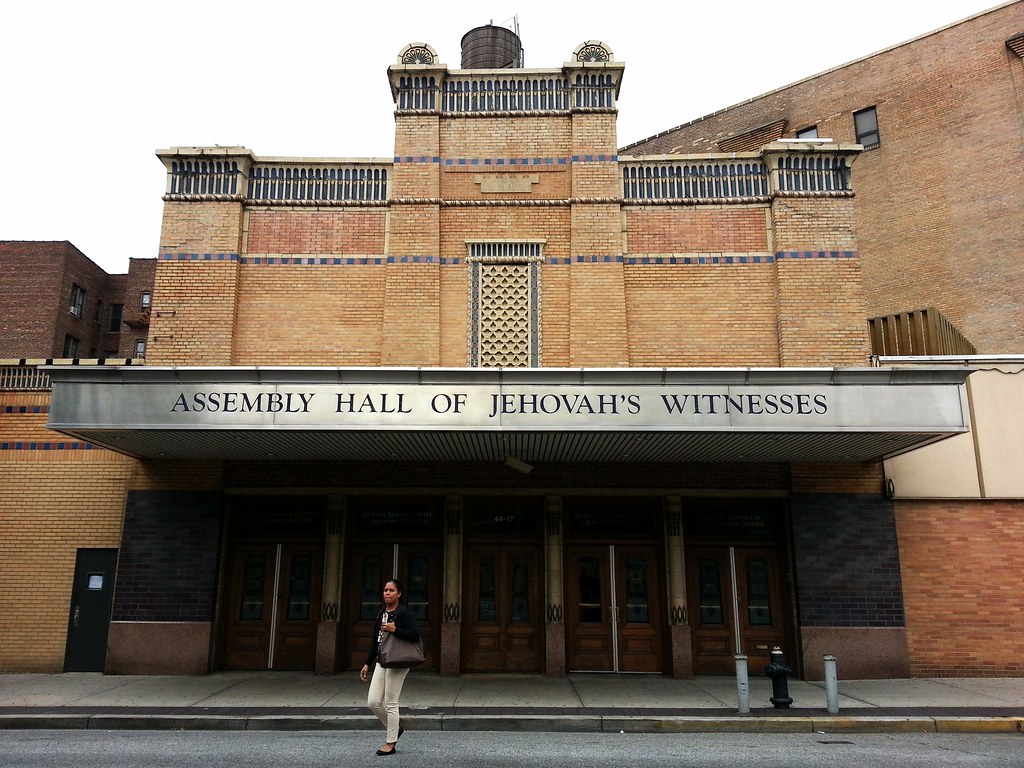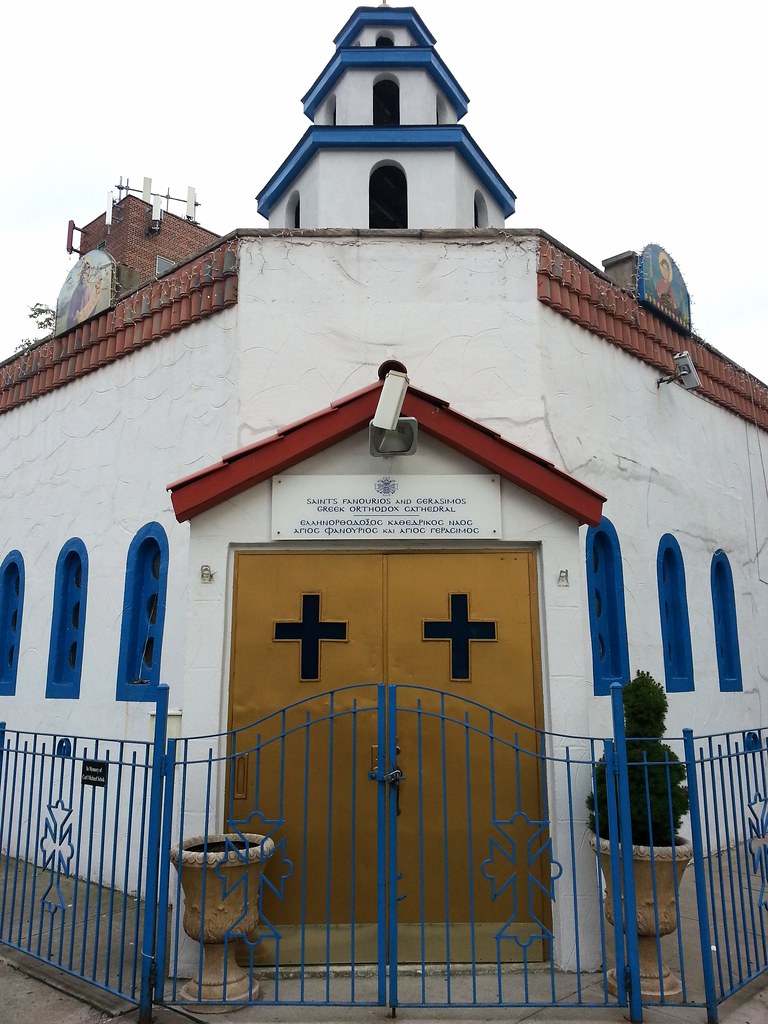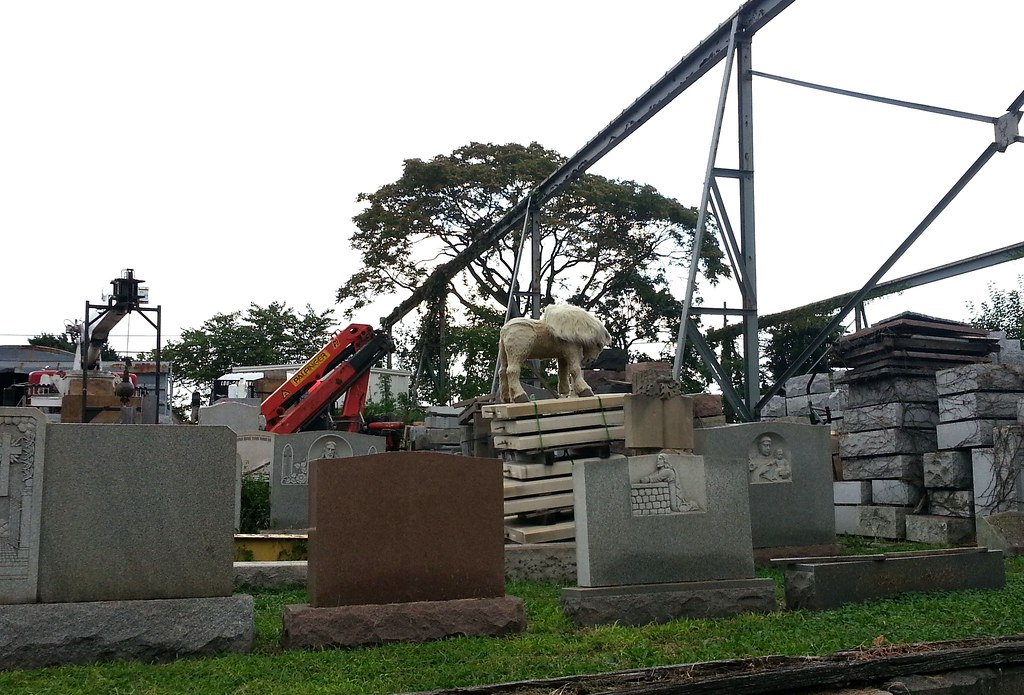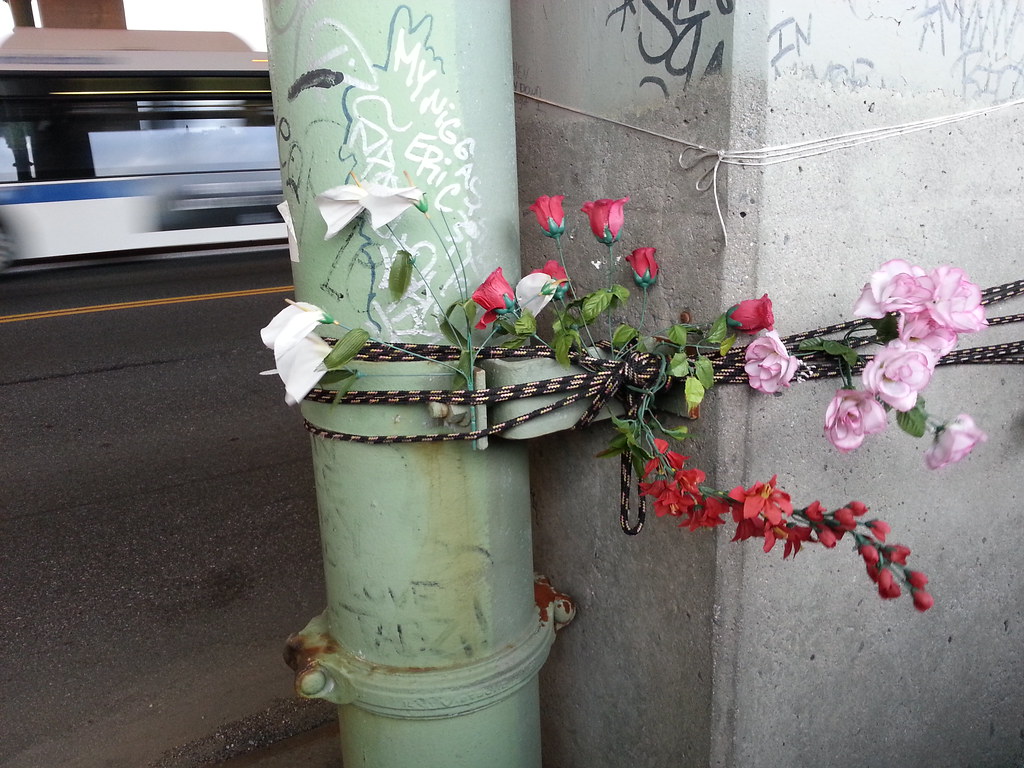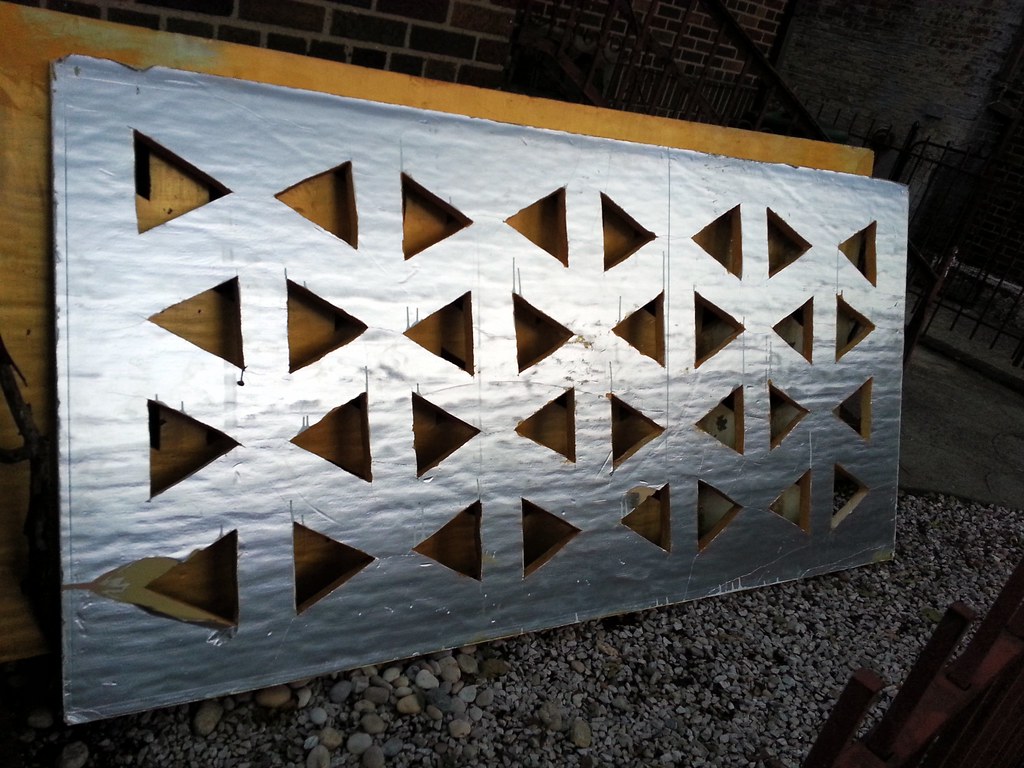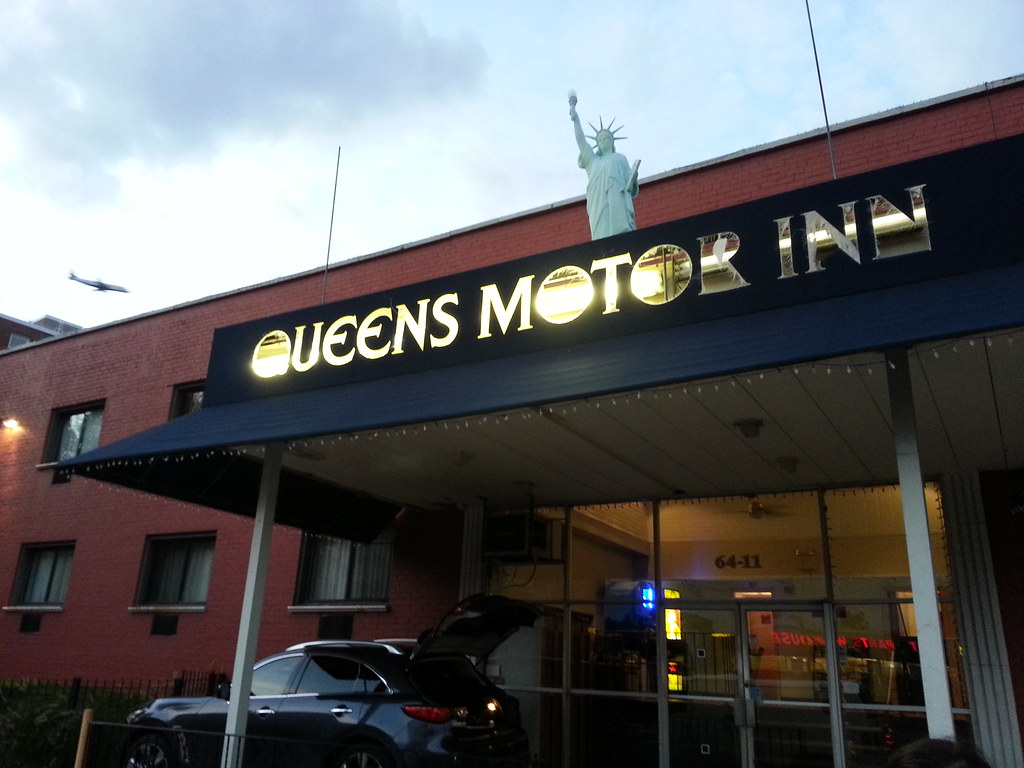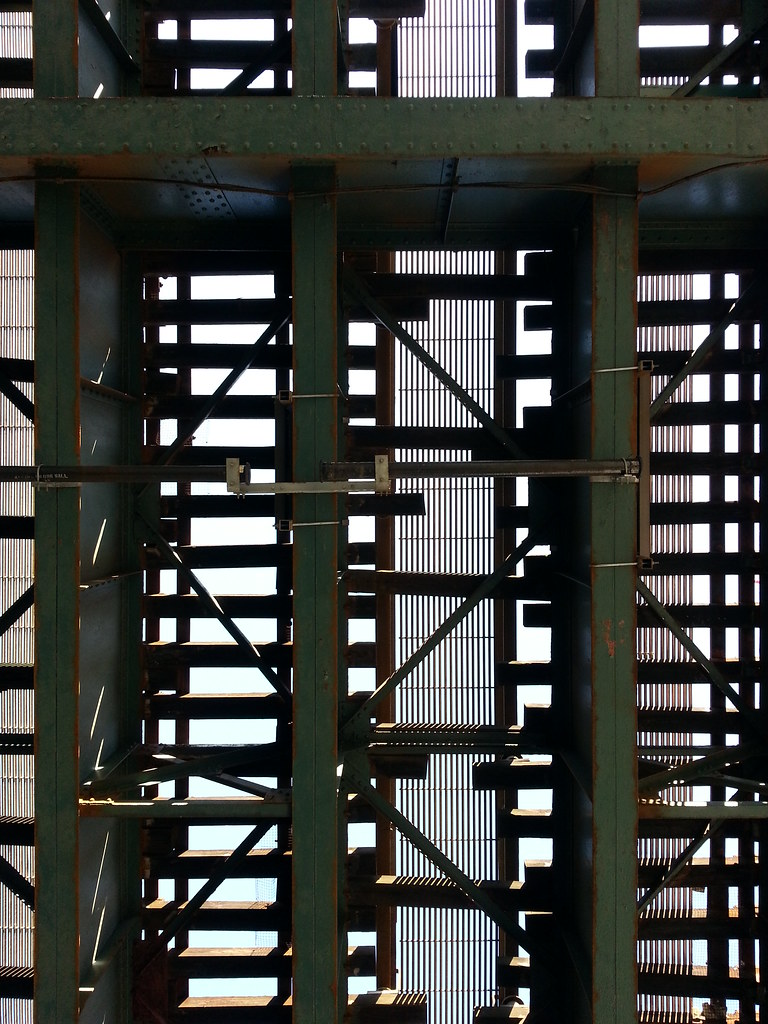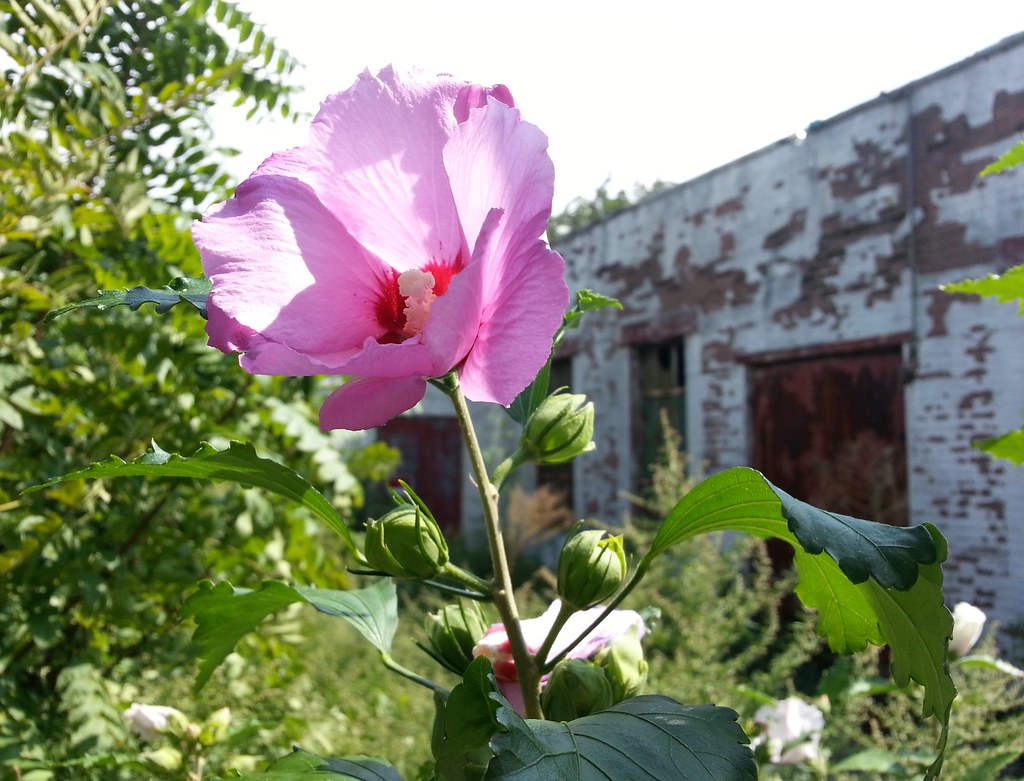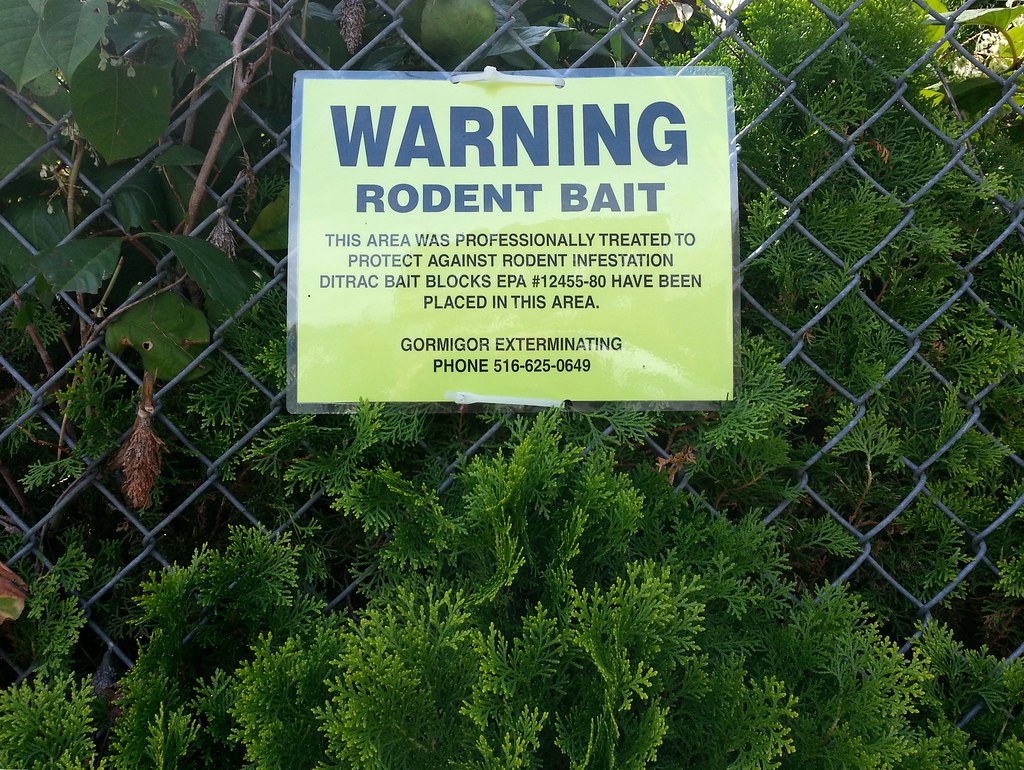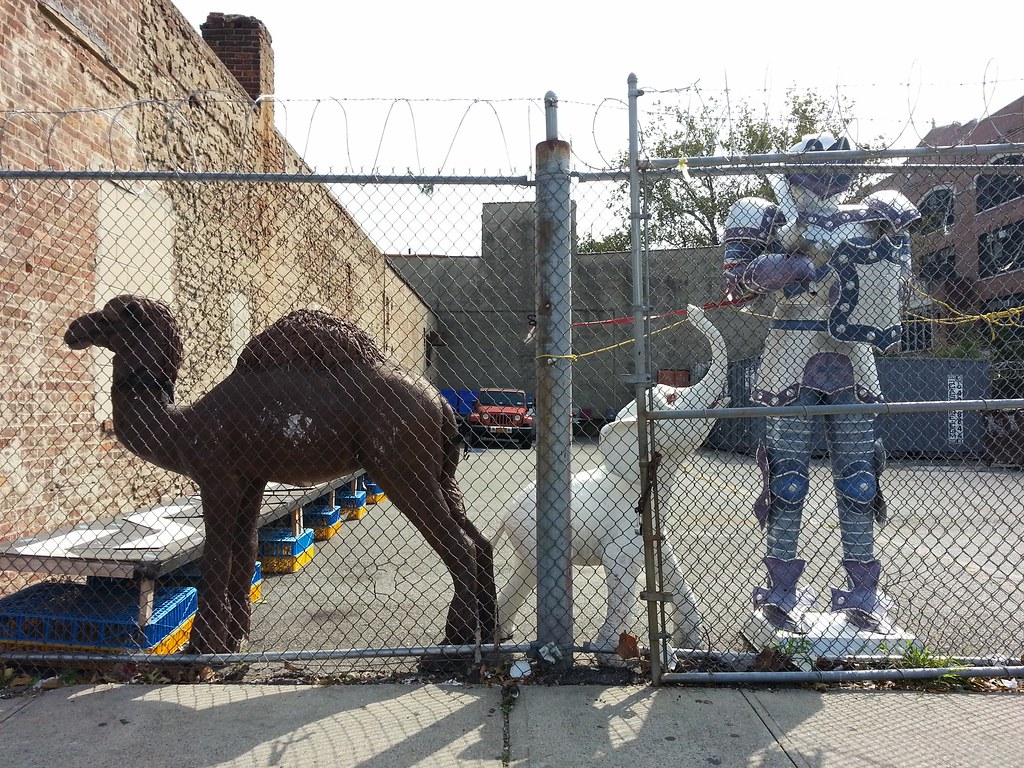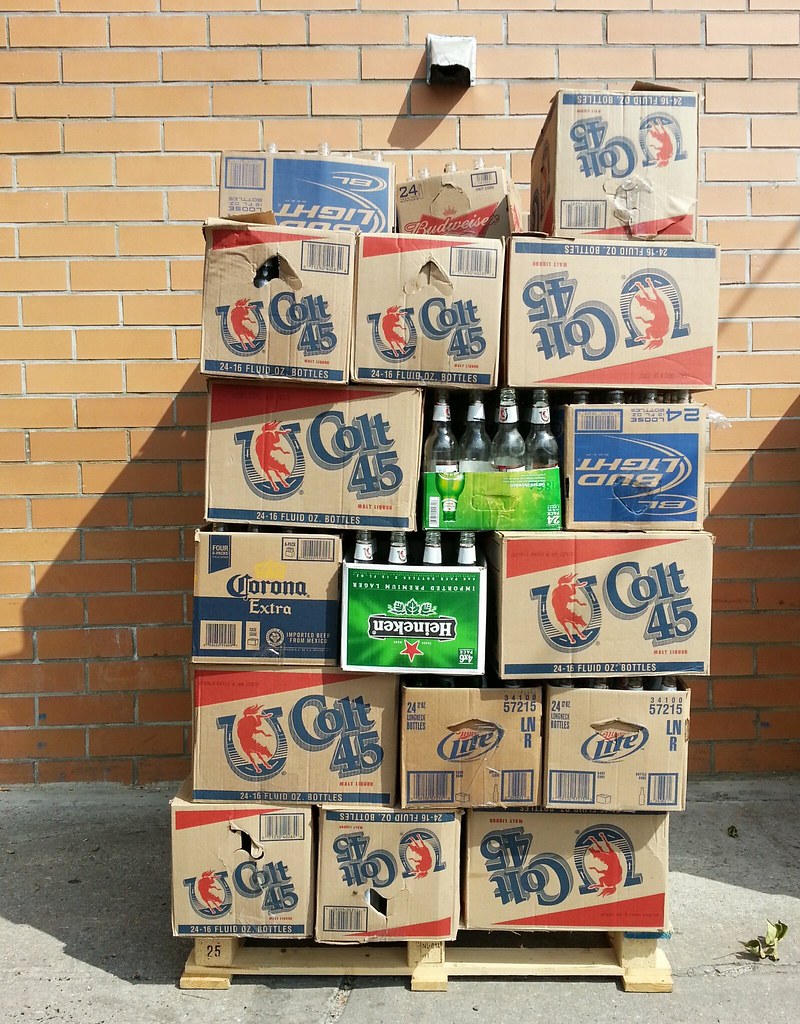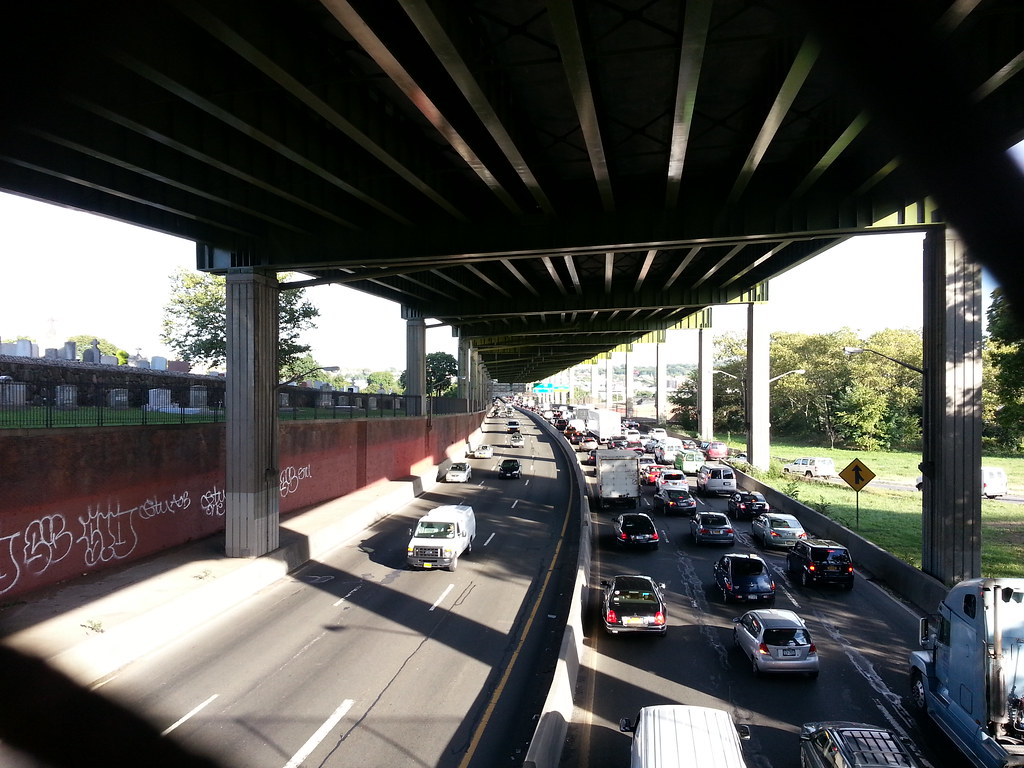
The Long Island Expressway briefly takes on a second tier east of its interchange with the Brooklyn-Queens Expressway. The upper roadway is for through traffic; the lower is for traffic moving between the two expressways. This is what things look like during the PM rush hour.
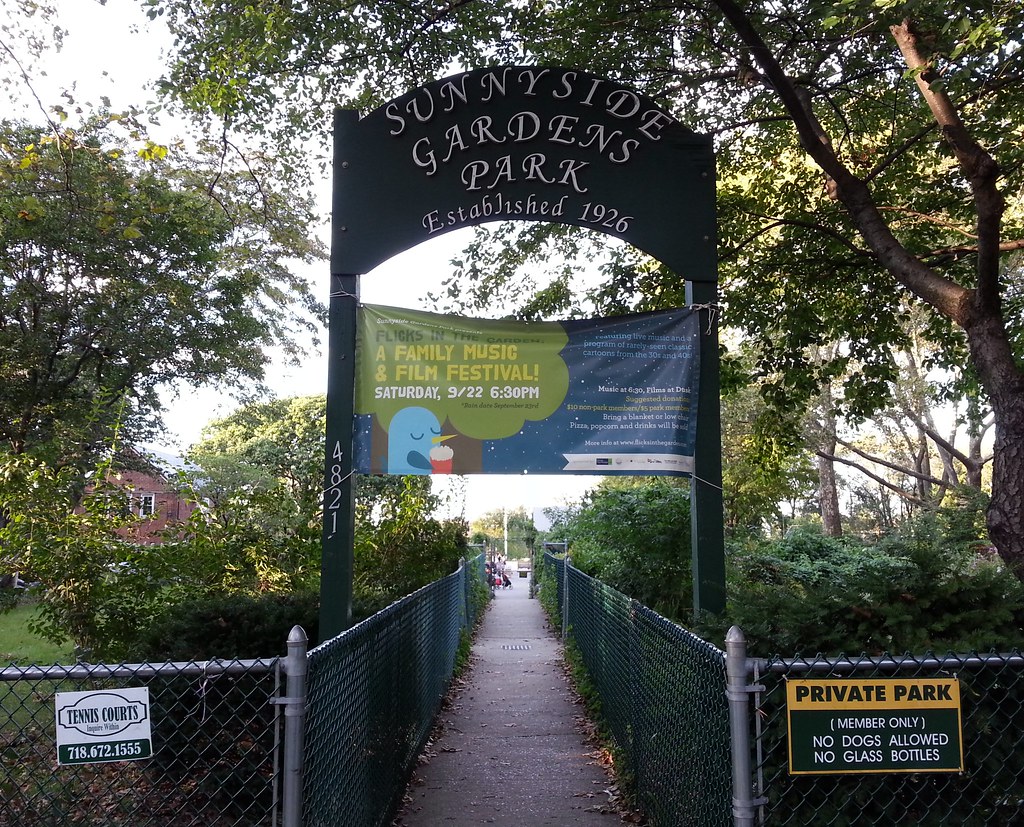
Like Gramercy Park, Sunnyside Gardens Park is privately owned and open only to nearby residents willing to cough up an annual fee. Its membership roll is currently maxed out, with dozens of families biding their time on the waiting list.
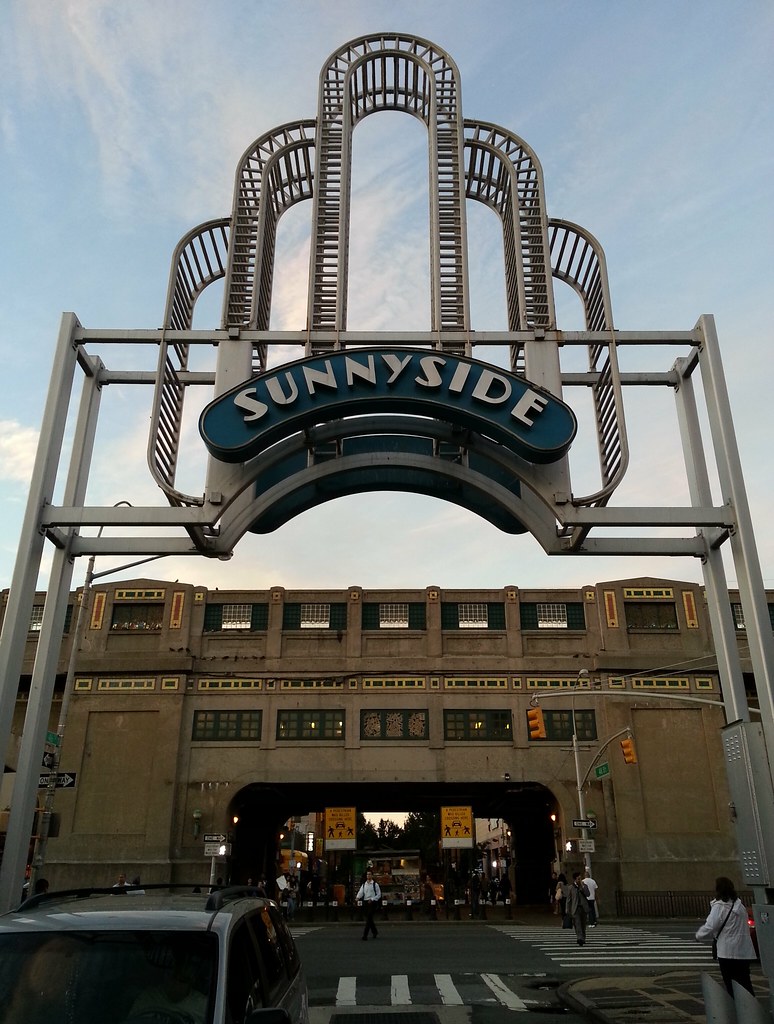
Erected in 1983, it was refurbished a few years ago and given a new lighting scheme; it was partially lit the last time we passed by.
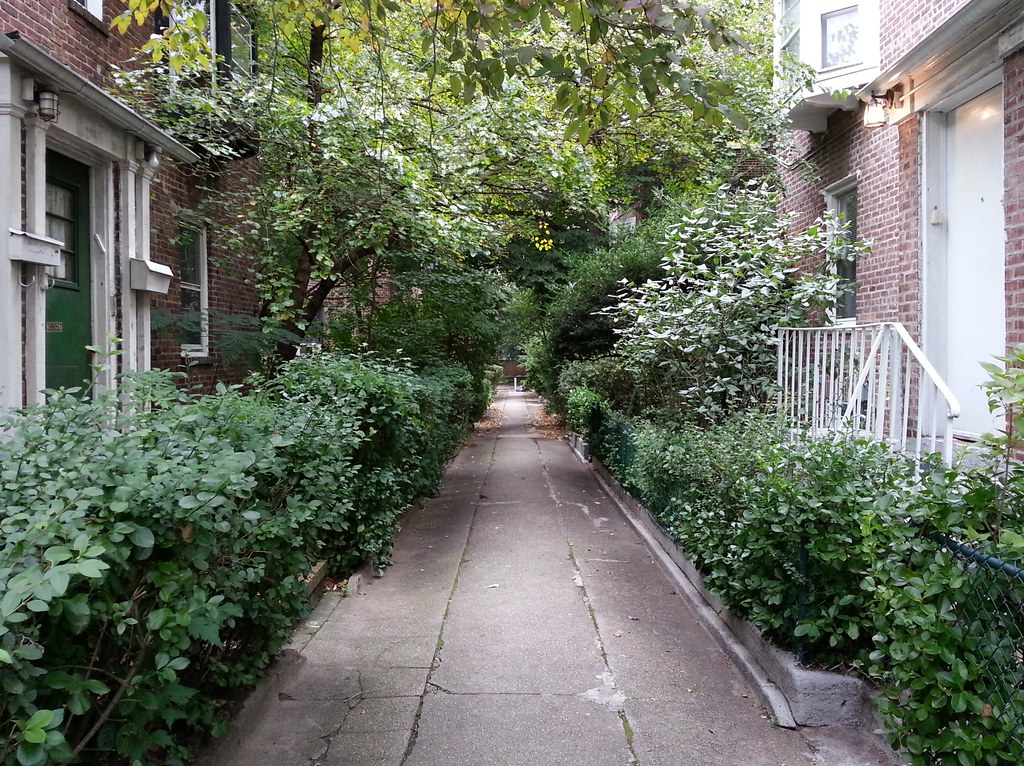
This and other mid-block alleyways lead to the lush communal courtyards tucked away inside the blocks of row houses here in Sunnyside Gardens. You can probably get a better sense of things from an aerial view of the neighborhood.

According to a fellow pedestrian, this bizarre-looking sidewalk column is one of two kiosks built by some community group here in Sunnyside a while back to provide people with a place to legally post announcements, ads, and the like. The group has since dissolved, and now there's no one responsible for maintaining these monstrosities. The adjacent Italian restaurant has stepped in and adopted this one — hence the color scheme.
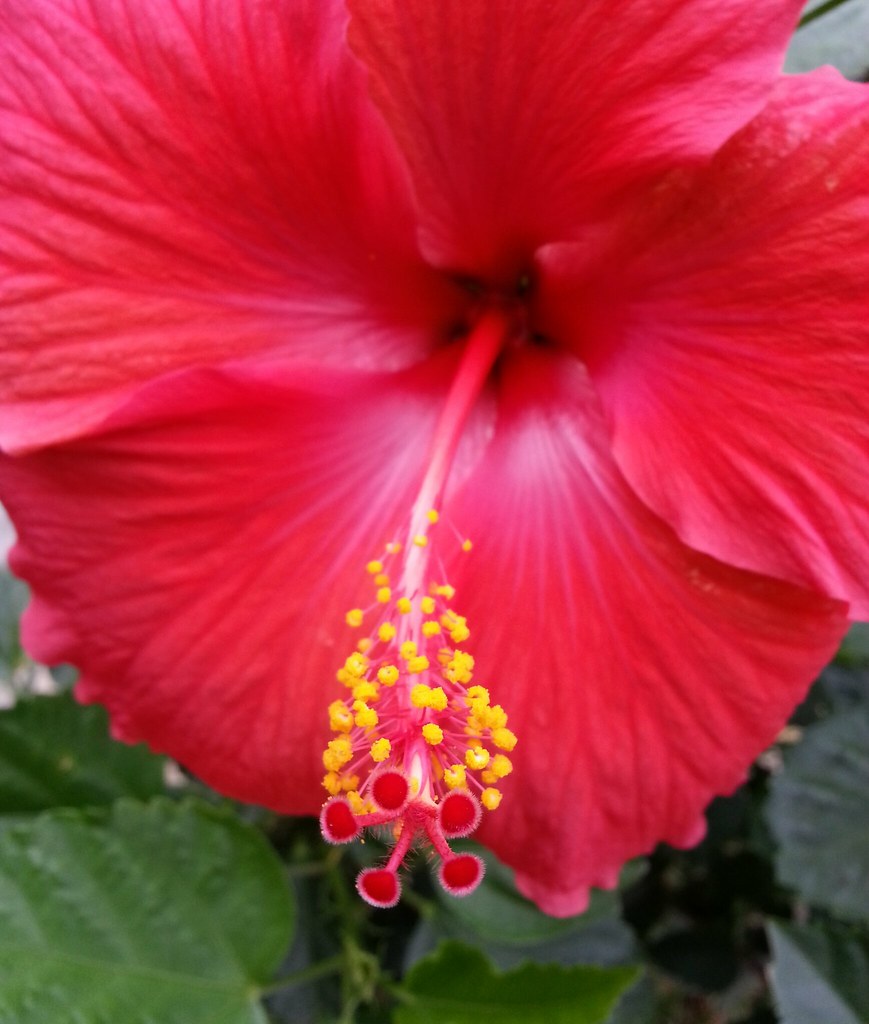
The yellow, pollen-producing stamina and the red, five-headed, pollen-receiving stigma both emerge from the stalk-like style. A pollen grain that lands on the stigma and germinates will grow a long pollen tube that reaches down through the style to an ovule in the flower's ovary, located at the base of the style, where fertilization occurs.
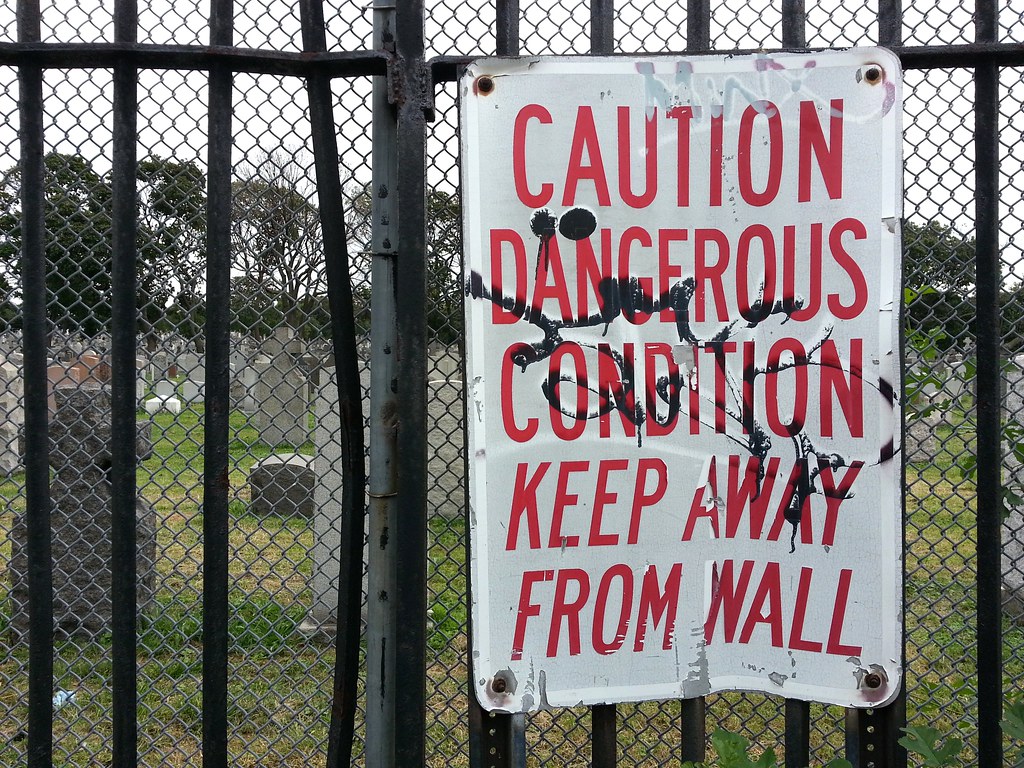
See all those people in the background? That's what happens when you get too close to the wall.
(If you're curious, you can take a look at the "dangerous condition" for yourself.)
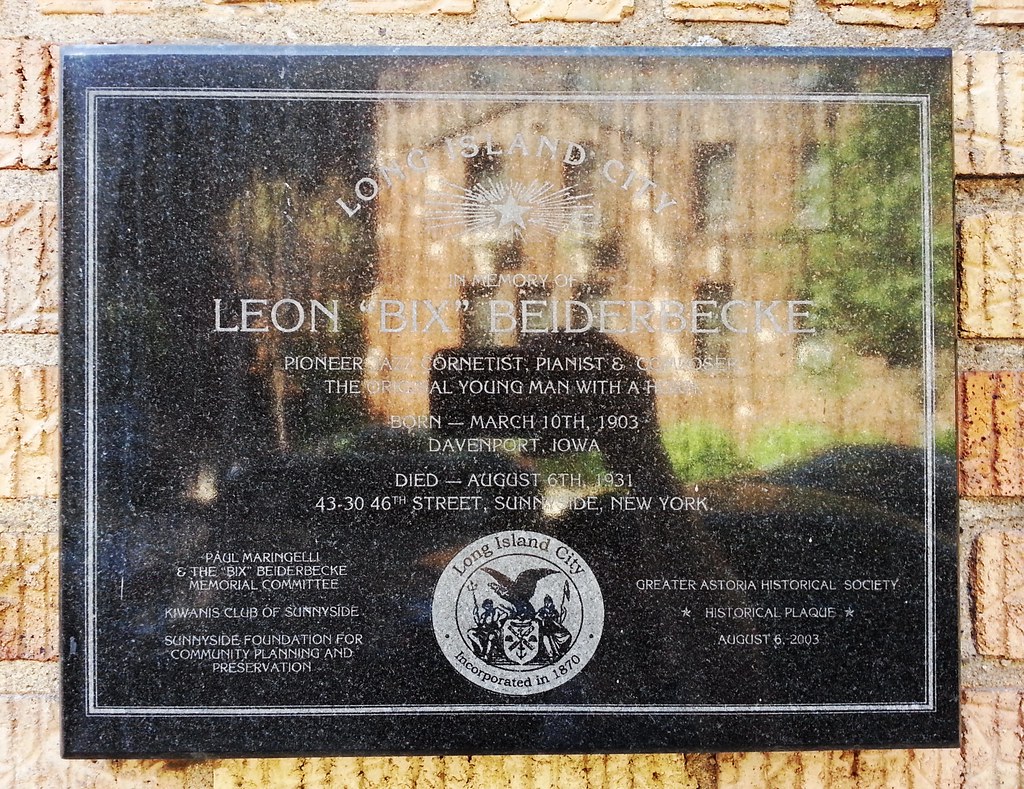
That's how Eddie Condon described the sound emanating from the horn of Bix Beiderbecke, a jazz cornet legend and Prohibition-era alcoholic who died of pneumonia in this Sunnyside apartment building at the age of 28, leaving behind a truncated but "scintillating oeuvre". Check out this documentary to hear him play and learn more about his life.

You can see the spot on the hood where the medallion was once affixed.
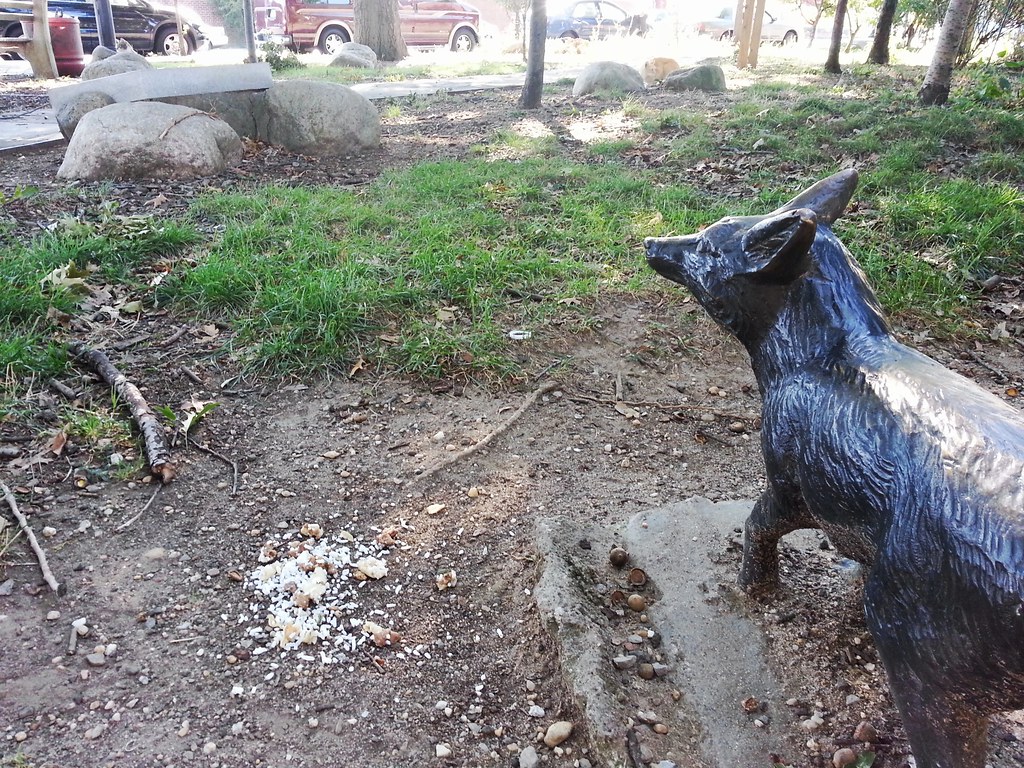
The eponymous canid of Quick Brown Fox Triangle* scopes out his potential competitors (there are two — can you find them?) before scarfing down his chicken and rice.
* Sound familiar? Strangely, there is a second park in Queens with the same name!
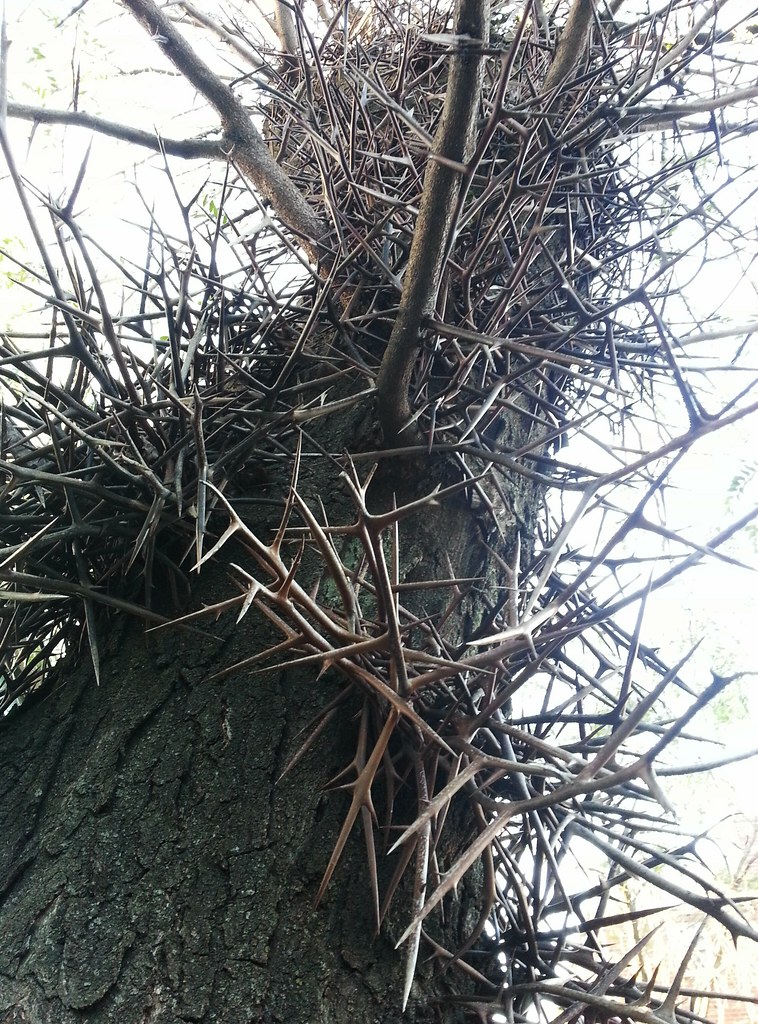
This tree's ferocious thorns are thought to have evolved as protection against the browsing megafauna of the Pleistocene epoch.

Who knew it was as easy as buying a bunch of old junk?

Here in East New York stands one of the five original substations built by the Long Island Rail Road around 1905 when it first began electrifying its tracks. Now abandoned, the substation will start to reveal its true identity to passersby a little later in the year.

George Gershwin was born in a house that once stood across the street from this synagogue turned church.
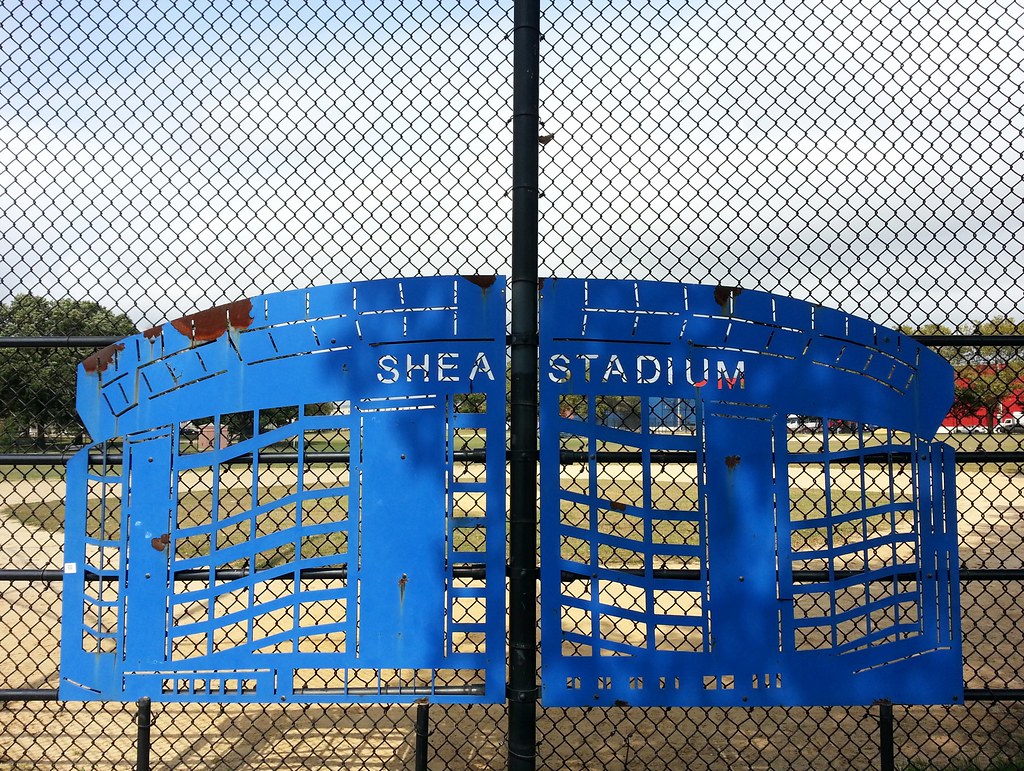
Looks better than the real one (now a parking lot for Citi Field).
The two adjacent ball fields here at Breukelen Playground are also named for demolished stadiums: Yankee Stadium (the old one) and Ebbets Field.

This 24-year-old mural once wrapped around the corner of this building in East New York, but most of it has now been painted over. I believe that's Jackie Robinson's silhouette on deck; the artist apparently included all of her favorite players somewhere in the scene.
Just a few blocks away from this spot, on the Brownsville side of the train tracks, once stood Eastern Park, the home of Brooklyn's National League ball club for several seasons in the 1890s. In fact, it was supposedly at this park that the team acquired the original version of the name by which it is still known in its current, distant home of Los Angeles. A number of surface rail lines ran through the area in those days, and so a walk to the ball park could require a fair amount of maneuvering on the part of the pedestrian to avoid being hit. Hence the club's new nickname: the Trolley Dodgers.*
After seven years of low attendance and mediocre baseball, the Dodgers left Brownsville and returned to their old stomping grounds in South Brooklyn, where they built the second Washington Park (whose sort-of-not-really remains we saw back in April), catty-corner to the site of their former home of the same name.
* Some sources claim that "Trolley Dodgers" referred more generally to Brooklyn's late-19th-century profusion of street car lines, rather than the specific lines that ran past Eastern Park.
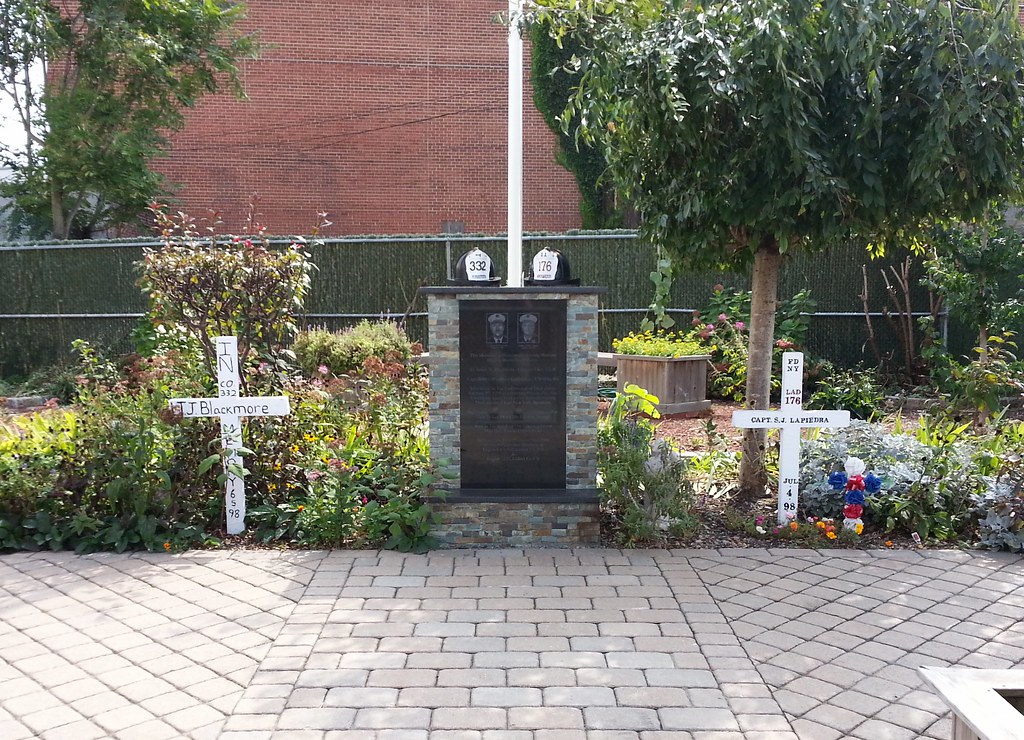
On June 5, 1998, two firefighters lost their lives in a five-alarm blaze that destroyed the four wood-frame houses that once stood on this site. Lt. James Blackmore was killed and Capt. Scott LaPiedra was fatally wounded when the floor beneath them collapsed after they had rushed into one of the buildings in search of an elderly woman who — unbeknownst to them, obviously — had already escaped by the time they entered.
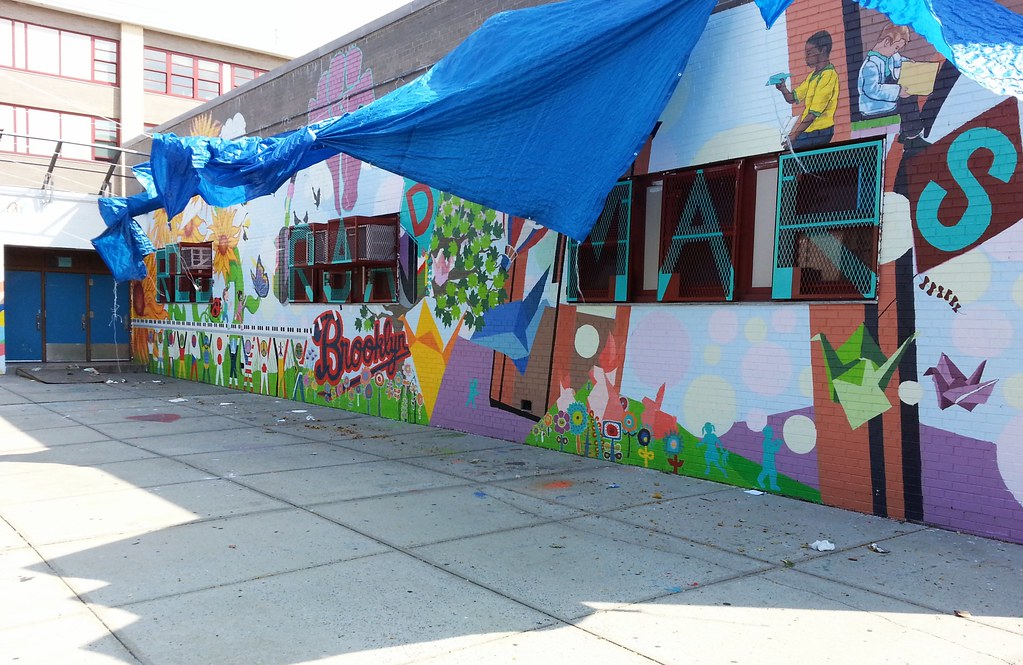
If I had passed by a week and a half earlier, I would have seen Buzz Aldrin at work on this mural!
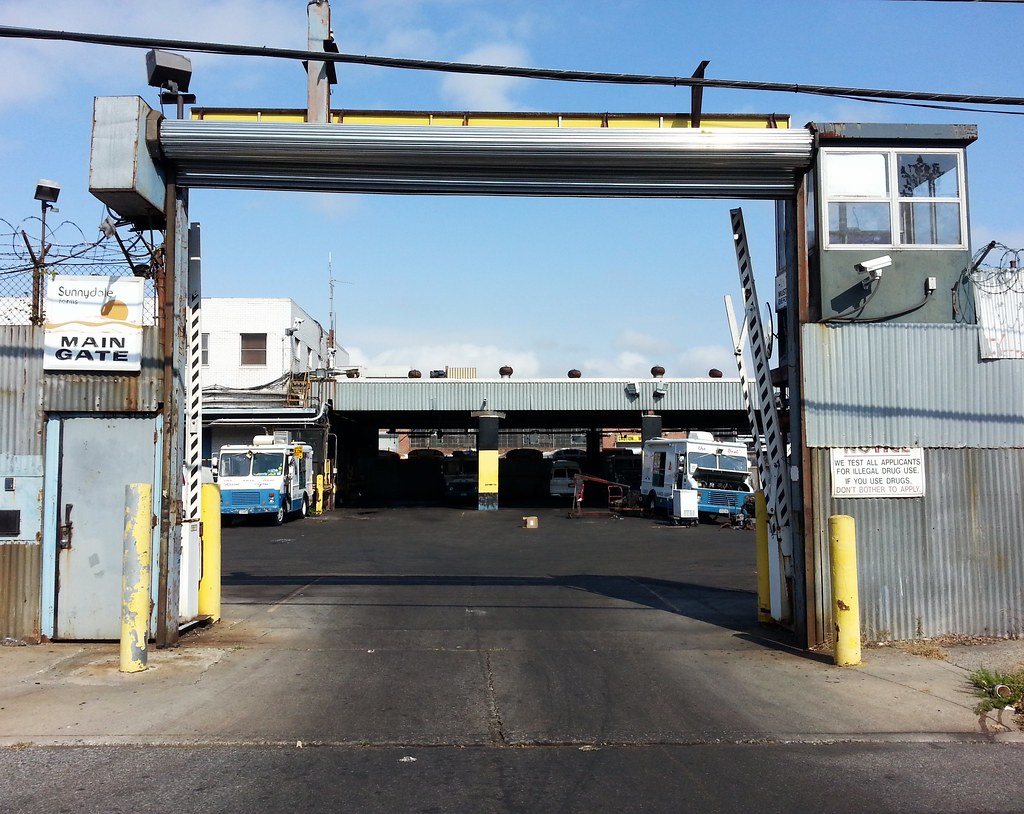
Looks like an undercover Mister Softee operation to me.

